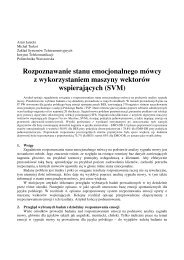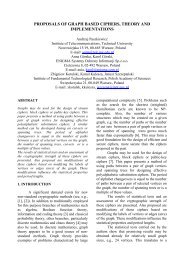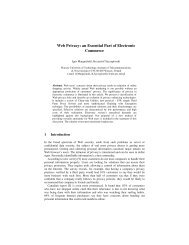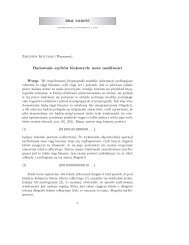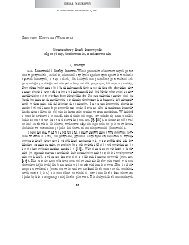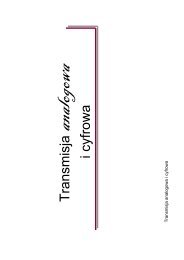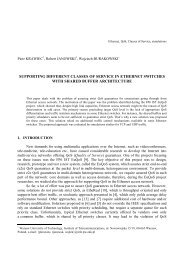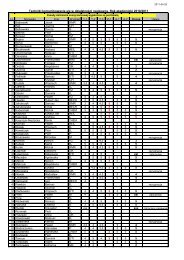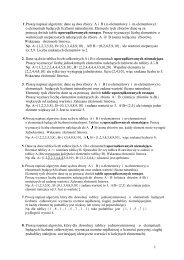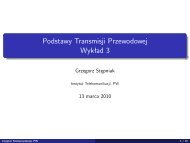MAX II Development Kit Getting Started User Guide
MAX II Development Kit Getting Started User Guide
MAX II Development Kit Getting Started User Guide
Create successful ePaper yourself
Turn your PDF publications into a flip-book with our unique Google optimized e-Paper software.
<strong>Getting</strong> <strong>Started</strong><br />
e. Read the UFM—The UFM is arranged as 256 locations, each<br />
containing 32 bits of data. Currently residing in the UFM is the<br />
inverse of each address. Set the default encoding to<br />
Hexadecimal and click Read UFM. The data displayed should<br />
be FFFF FFFE FFFD FFFC FFFB and so forth. You can recompile<br />
this design with a different memory initialization file (MIF) to<br />
change the data in the UFM. Note that when you read from the<br />
UFM, a file called UFMDataBack.txt is created in the same<br />
directory where the USB_Utility.exe file resides. This file is<br />
re-created each time you read the UFM. It contains the<br />
addresses and the data read from those addresses.<br />
1 UFMDataBack.txt must not be open when you read from<br />
the UFM.<br />
f. Display the board temperature and push button counts—Press the<br />
S2, S3, and S4 buttons on the board. Note that each time a<br />
button is pressed, the corresponding text box on the GUI<br />
increments. Also note that the board temperature is updated<br />
each time a switch is pressed.<br />
1 The SRAM and UFM read/write options only read or write<br />
384 bytes at a time. This data is always written to or read from<br />
the 384 lowest address locations.<br />
Understanding the Functionality of the USB Reference Design<br />
The USB Reference Design has two pieces:<br />
■<br />
■<br />
Verilog code written to dictate the functionality of the <strong>MAX</strong> <strong>II</strong> device<br />
Visual Basic code to control the PC application<br />
The <strong>MAX</strong> <strong>II</strong> design consists entirely of state machines. Each individual<br />
design file contains a state machine to control the reading/writing of each<br />
component. These files contain extensive comments and designers are<br />
encouraged to look through the Verilog code to gain a complete<br />
understanding of how the <strong>MAX</strong> <strong>II</strong> design functions. The Director.v code<br />
constantly awaits for one of two things to happen: either a button is<br />
pressed or data arrives from the PC. If a button is pressed, the Director<br />
enables the PassivesInterface.v, which takes over control of the output to<br />
the USB MAC FIFO and writes the values of the Switch Counters and<br />
Temperature blocks. If data is received from the PC, then the Director<br />
passes control to the UFMInterface.v, the SRAMInterface.v, or the<br />
LCDInterface.v, depending on the value of the data received. Refer to the<br />
Verilog code itself for more details on the operation of this <strong>MAX</strong> <strong>II</strong> design.<br />
Altera Corporation <strong>Development</strong> <strong>Kit</strong> Version 1.0.0 2–21<br />
October 2004<br />
<strong>MAX</strong> <strong>II</strong> <strong>Development</strong> <strong>Kit</strong> <strong>Getting</strong> <strong>Started</strong> <strong>User</strong> <strong>Guide</strong>




